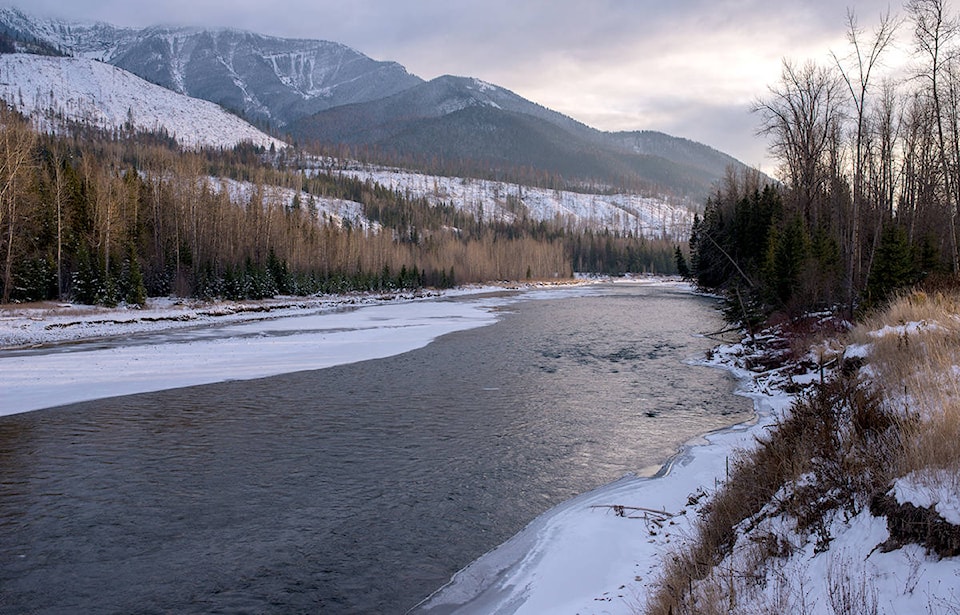North Coal Limited, an emerging metallurgical coal company in Sparwood, B.C., held an information session on Thursday at the Fernie Chamber of Commerce. The company is focused on exploring for, and eventually producing, metallurgical coal from its proposed Michel Coal Project, in the Elk Valley’s Crowsnest coalfield. The mine will produce between 2.3 and 4 million tonnes of steelmaking coal per year for up to 25 years. The Michel project is located in the Elk Valley Coal Fields between two existing mines and adjacent to Corbin Road. The proposed mine includes three open pits at Loop Ridge, Michel Head and Tent Mountain, totaling a disturbance of approximately 1900 hectares.
Patty Vadnais, Communications Lead with North Coal, said that water quality is a top issue for the company, which is using a layered waste rock disposal system that limits oxygen flow through waste rock piles, which reduces the chemical reactions that lead to excessive selenium and nitrate levels that could harm ecology in the Elk River Valley.
“We’ve been working on our environmental baseline studies since 2013,” she said. “We’ve done the environmental work up-front and designed a mine plan with that in mind, rather than designing a mine plan, and then making the environmental pieces fit to that. It’s been a high priority at North Coal that water and environmental considerations are put up front, and we are referencing the Elk Valley Water Quality Plan in development plans.”
Minimizing the operation’s exposure to water is axial to North Coal’s environmental plan, according to Vadnais.
“A smaller footprint means that we are not touching as much water,” she explained. “We are minimizing selenium oxidation. In pit we are doing saturated storage, so part of the selenium problem is that air that can mix with things, and it [selenium] becomes mobile and moves down the rivers. A saturated infill removes that air and keeps the selenium where it is.”
As per the North Coal website, there are plans in place to minimize the environmental impact of the mine, including a pit design focused on “controlling in-pit water and discharge points from the pit,” as well as returning waste rock to the pit to reduce selenium oxidation and metal leaching using saturated zones. North Coal is also using a bottom-up development of waste rock storage with low-oxygen conditions to reduce selenium production, metal leaching, and acid rock drainage. They are also planning to “keep clean water away from mine workings and returning it to streams,” among other safeguards.
The Free Press asked North Coal about additional trains, and train noise, in Fernie when the new mine comes on-line.
Jason Swanson, Environmental Assessment Coordinator with North Coal said the current production schedule, and annual production rates at around 2 million tonnes, equates to a train and a half, to two trains a week.
“There will be additional trains in the system, about two trains a week,”he said.
“If you want to prevent the conductors from blowing horns, then you have to build a fence, the entire length of the town with gates and lights. That would have to be a conversation between the town and CP.”
Another topic covered during the presentation was housing for mine workers, who will total in the hundreds, (350-400 during mine construction. 250-300 during production).
“It’s not North Coal’s goal to provide subsidized housing, or to build single detached dwellings,” Vadnais explained. “The best solutions are solutions that come from the market that are done by developers and match with market needs, but we are looking for mitigation options that assist with transition, where somebody comes to town, and they need a place to stay for three months or six months while they find a permanent home. We need to deal with that large influx of people during construction.”
